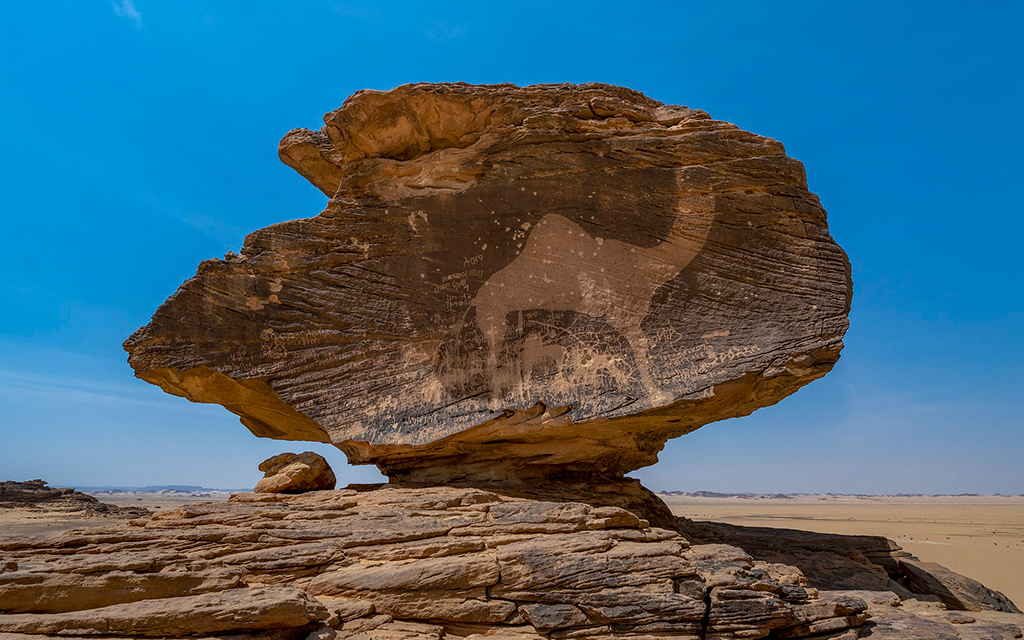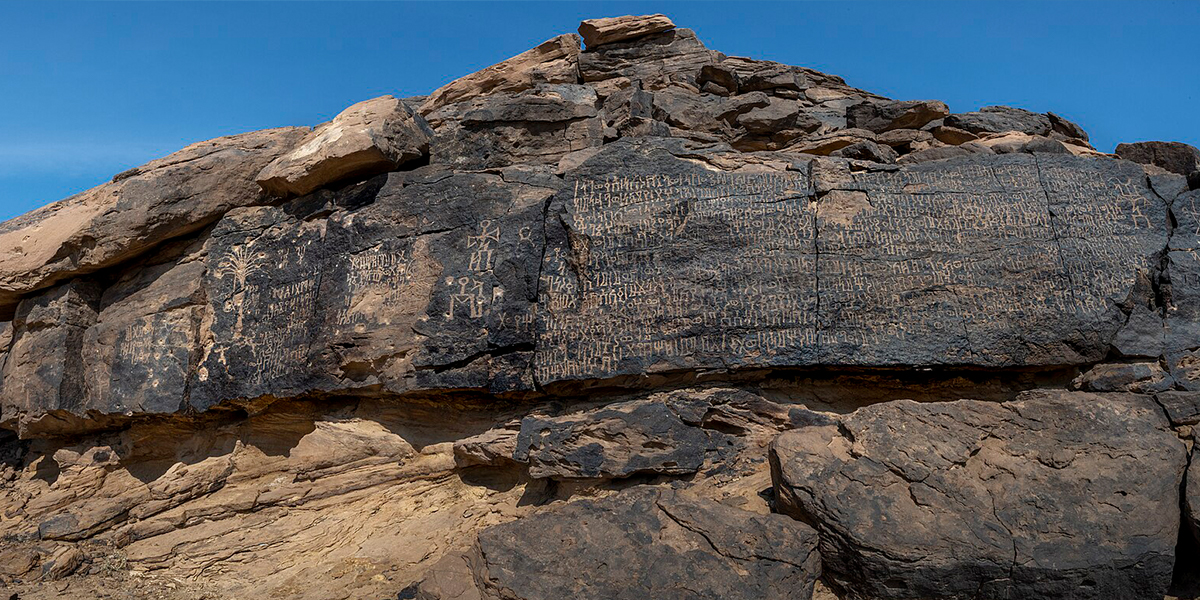Stretched within Najran’s golden sands lies one of Saudi Arabia’s most profound historical canvases. Bir Hima Rock Petroglyphs and Inscriptions are not merely marks on stone; they are time-worn representations from thousands of years ago, preserved under open skies and harsh winds. As part of the UNESCO-recognized Hima Cultural Area, this site captures the Kingdom’s prehistoric past with surprising clarity and visual power.
Today, it stands as a magnet for scholars, adventurers, and cultural tourists drawn to the authenticity of ancient Arabia. For residents and investors in Najran, this landmark brings long-term value by positioning the region as a cultural gateway.
Etched Through Millennia
The history of Bir Hima Rock Petroglyphs and Inscriptions dates back as far as 7000 BC. Found along old caravan trails, these carvings were left by those who traveled, traded, fought, and worshipped across the desert.
What you will find:
- Thousands of petroglyphs depicting humans, camels, ibexes, and hunting tools
- Bronze-age inscriptions in ancient scripts, including Thamudic, South Arabian, and Kufic
- A rare glimpse into the social, religious, and economic life of early desert civilizations
From prehistoric hunters to Islamic-era travelers, these rocks recorded them all.
Finding Bir Hima in Najran
Located roughly 120 to 130 kilometers north of Najran city, desert roads lead to the site, while nearby signage and visitor facilities support the journey. Its remote setting is part of the charm; you would not stumble upon it accidentally.
How to get there:
- By car from Najran: Approx. 90-minute drive
- Best for guided visits or tours
- Roads are paved until the last few kilometers; signage available near key clusters
Once on site, expect wide basins framed by dry wadis and rocky outcrops. Bir Hima is an open-air heritage; rugged, untouched, and immersive.

A Legacy That Speaks
The significance of Bir Hima lies in both its scale and survival. It is not one or two rocks but an entire cultural zone. The area features:
- Archaeologists have identified 21 major sites clustered around ancient water wells in the area
- Depictions of rituals, hunts, and tribal symbols
- Carvings aligned along historic trade and Hajj routes
This is why it joined the UNESCO World Heritage list in 2021: one of the oldest and best-preserved examples of petroglyph art in the Arabian Peninsula.
Geographic Context
Bir Hima is not just a rock cluster; it is located at a desert convergence point, a natural passageway between southern Najran, western Asir, and northern Yemeni regions.
- Surrounded by volcanic hills and flat sand plains
- Positioned near ancient camel caravan intersections
- Close to seasonal wadis that once fed desert wells
This made the area not only livable in ancient times but also deeply spiritual.
Area Around Bir Hima
While remote, the site remains well connected.. It exists in line with other historic and cultural zones. Nearby areas include:
- Najran City: A historic urban center with accommodation, dining, and local markets
- Al-Ukhdood ruins: Another significant archaeological site, 40 minutes away
- Najran Museum: Holds artifacts from the wider Najran basin
- Najran Airport: 90 minutes from Bir Hima
For those looking to turn a visit into a full-day cultural itinerary, the options are growing.
With Saudi Arabia’s Vision 2030 promoting cultural tourism, Bir Hima is set to become part of a broader effort to revitalize the Kingdom’s southern heritage corridor. For residents, this means:
- Improved access roads and signage
- Potential rise in local property value
- Stronger cultural identity for Najran neighborhoods
For investors, cultural hotspots like Bir Hima add long-term appeal to adjacent areas by increasing footfall and preservation efforts.
Explore with Bayut-KSA
Looking to buy property or invest near Saudi Arabia’s emerging cultural zones? Bayut-KSA offers verified listings in Najran and surrounding districts, with search filters for proximity, amenities, and budget.
Let your next property decision be shaped by both heritage and opportunity.





